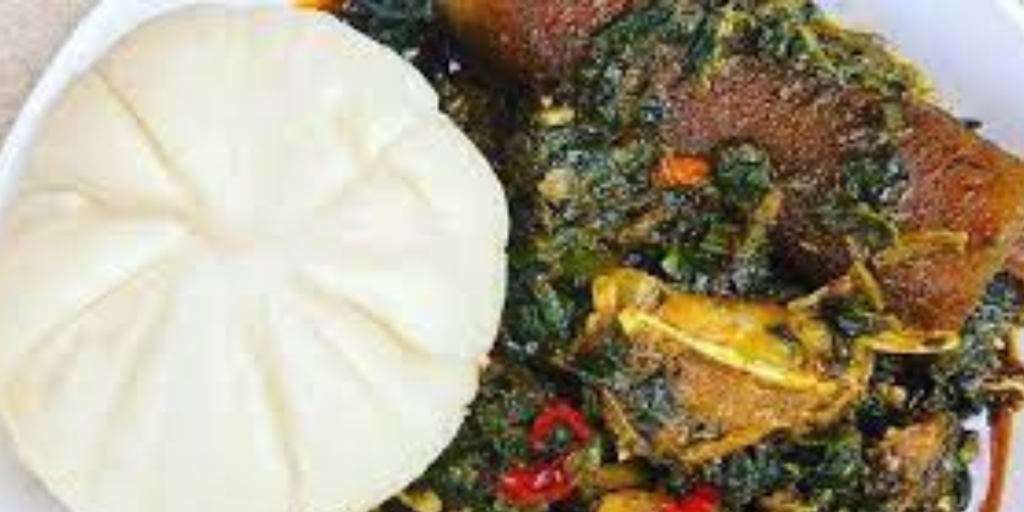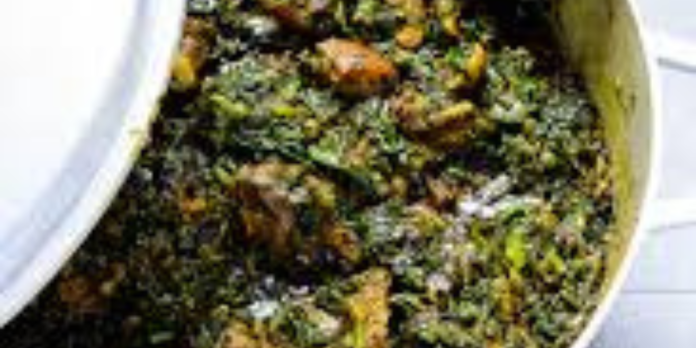Table of Contents
Afang soup, a rich and flavorful dish originating from the Efik and Ibibio people of Nigeria, is a culinary treasure that has captured the hearts and palates of many across the nation and beyond. Known for its distinctive blend of fresh Afang leaves (also known as Okazi or Gnetum africanum) and waterleaf, this hearty soup is celebrated not just for its delectable taste but also for its nutritional benefits. As Nigerian cuisine continues to gain global recognition, Afang soup stands out as a symbol of the country’s diverse and vibrant food culture. In 2023, the quest for the best Afang soup recipe has reached new heights, with chefs and home cooks alike striving to perfect this traditional dish by incorporating contemporary culinary techniques and fresh ingredients.
Nigerian cuisine is a treasure trove of flavors, and one dish that stands out in the culinary landscape is Afang soup.
Hailing from the Efik and Ibibio tribes of Southern Nigeria, Afang soup is a delectable and nutritious dish that has found its way into the hearts and stomachs of many. In this article, we will embark on a culinary journey, exploring the ingredients, preparation process, and cultural significance of Afang soup.
The Essence of Afang Soup
Afang soup is renowned for its rich, earthy flavor and unique texture, attributed to its key ingredients: Afang leaves and waterleaf. These leaves are indigenous to the tropical rainforests of West Africa, and their combination imparts a distinct taste to the soup. The dish is often prepared with a variety of protein sources, such as meat, fish, or seafood, elevating its nutritional value.
Ingredients
- Afang Leaves
Afang leaves are the star of the show. These dark green, leafy vegetables are harvested from the climbing plant Gnetum africanum. The leaves are usually sliced thinly before being added to the soup. - Waterleaf
Waterleaf, with its succulent and slightly tangy taste, complements the earthiness of Afang leaves. It adds a unique texture to the soup, making it a delightful experience for the palate. - Protein Sources
Afang soup can be prepared with a variety of proteins, including goat meat, cow tripe (shaki), beef, assorted offals, or a combination of seafood like periwinkle, crayfish, and stockfish. The choice of proteins allows for customization according to personal preferences. - Palm Oil
Palm oil is a staple in Nigerian cuisine and is crucial for Afang soup. It not only adds a distinctive red color to the dish but also enhances the overall flavor. - Periwinkle and Crayfish
Periwinkle, a small edible sea snail, and crayfish, dried and ground freshwater crustaceans, contribute to the soup’s depth of flavor. They are commonly used in Nigerian cooking to impart a rich, seafood essence to dishes. - Seasonings
Afang soup is seasoned with a blend of spices and herbs, including onions, garlic, ginger, and bouillon cubes. These ingredients work together to create a harmonious flavor profile.
The Cooking Process

- Preparing the Ingredients
Before embarking on the cooking process, ensure all ingredients are fresh. Clean and cut the meat into bite-sized pieces, slice the Afang leaves thinly, and chop the waterleaf. - Parboiling the Meat
Place the meat in a pot, add water, and season with salt, onions, and any preferred spices. Allow the meat to parboil until it is tender. This step forms the flavorful base for the soup. - Adding Palm Oil
In a separate pot, heat palm oil until it becomes clear. Be cautious not to overheat, as this may alter the oil’s taste. Add chopped onions and allow them to sauté until golden brown. - Incorporating the Protein
Transfer the parboiled meat into the pot with palm oil and onions. Stir well to ensure the meat is coated with the oil and onions, enhancing its flavor. - Blending the Crayfish
In a blender, combine crayfish with a little water and blend until it forms a smooth paste. Add this paste to the pot, stirring it into the meat and palm oil mixture. - Cooking the Protein
Allow the meat to cook in the palm oil and crayfish blend until it absorbs the flavors. This step is crucial for building the foundation of the soup’s taste. - Incorporating the Vegetables
Add the sliced Afang leaves and chopped waterleaf to the pot. These vegetables should be added gradually, allowing them to cook down and release their flavors. - Seasoning
Season the soup with salt, bouillon cubes, and any additional preferred spices. Taste the soup and adjust the seasonings accordingly to achieve the desired flavor balance. - Simmering to Perfection
Let the soup simmer on low heat, allowing all the ingredients to meld together. This slow cooking process is vital for achieving the ideal consistency and flavor profile.
Cultural Significance
Afang soup is more than just a culinary delight; it holds cultural significance in Nigerian communities. It is a dish often prepared during special occasions, celebrations, and gatherings. The act of making Afang soup is a communal experience, with family members or friends coming together to share the joy of cooking and savoring this beloved dish.
In Nigerian folklore, certain beliefs surround the consumption of Afang soup. Some communities believe that the soup possesses mystical properties, bringing good fortune and prosperity to those who indulge in its flavors. This belief has contributed to the soup’s popularity and its role in festive celebrations.

Serving and Enjoying Afang Soup
Afang soup is typically enjoyed with a variety of Nigerian staples, such as fufu (a starchy side dish made from cassava, yams, or plantains) or rice. The combination of the soup’s rich, flavorful broth with the soft, chewy texture of fufu creates a culinary experience that is both satisfying and comforting.
When serving Afang soup, presentation is key. The vibrant colors of the dish, coupled with the enticing aroma, make it an appetizing sight. Garnishing with additional chopped fresh vegetables or a sprinkle of crayfish adds a finishing touch that elevates the visual appeal.
Conclusion
In conclusion, making Afang soup is not just a culinary endeavor; it is a celebration of culture, community, and the rich biodiversity of Nigerian ingredients. From the vibrant green Afang leaves to the succulent waterleaf and the aromatic blend of spices, each element plays a role in creating a dish that captivates the senses.
Whether you’re a seasoned chef or a novice in the kitchen, exploring the art of Afang soup offers a delightful adventure into the heart of Nigerian cuisine. So, gather your ingredients, embrace the communal spirit of cooking, and savor the flavors of this iconic West African dish.
Nigerian Beans Porridge Recipe





















